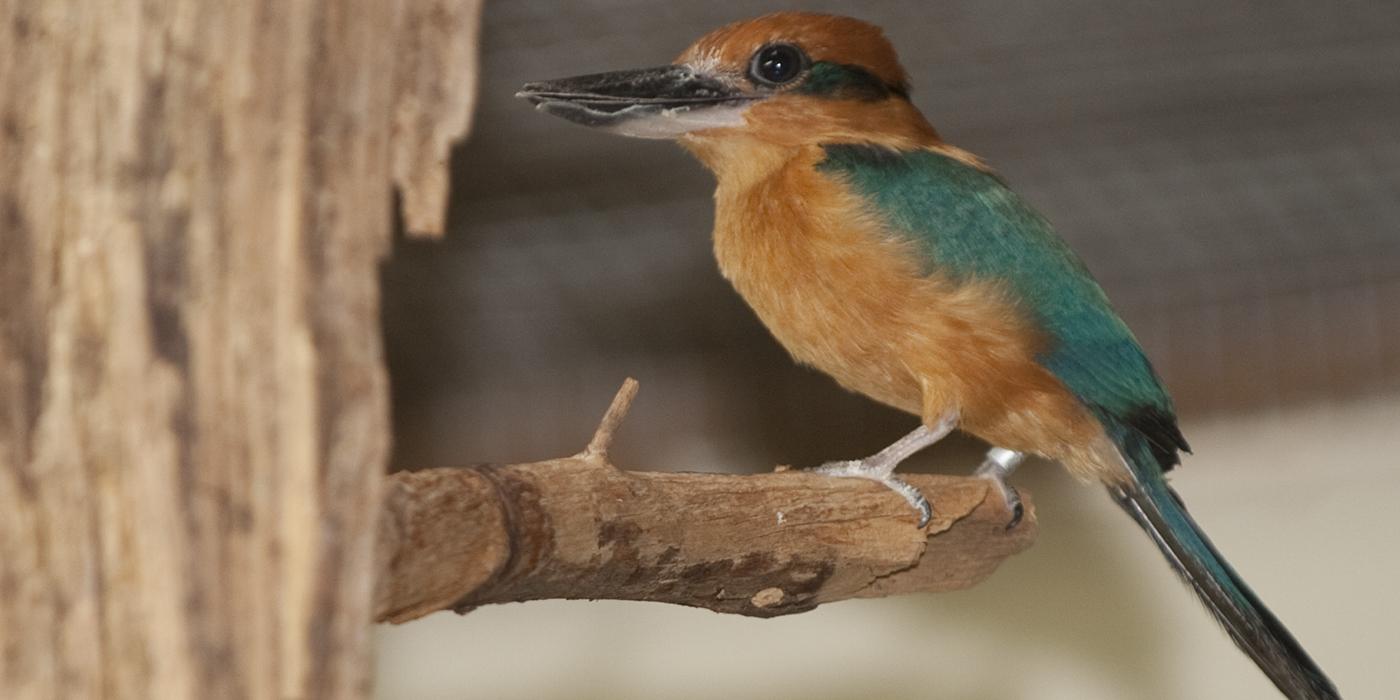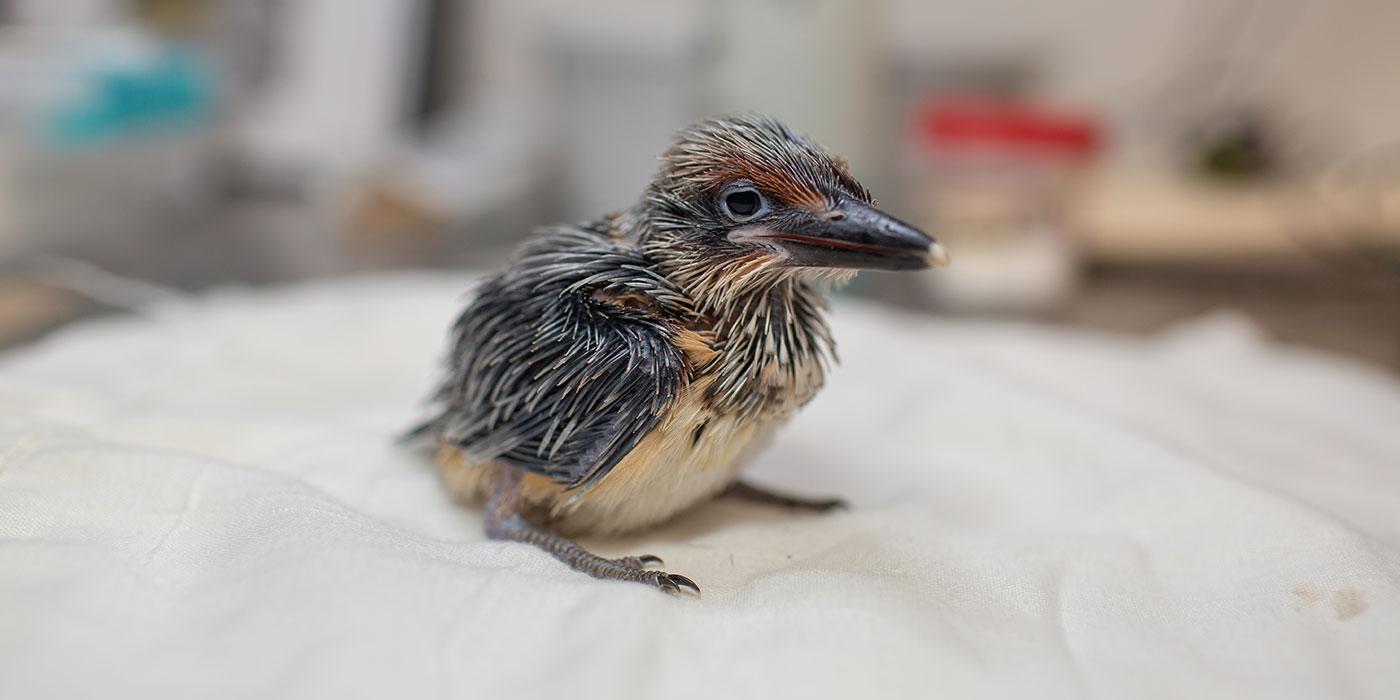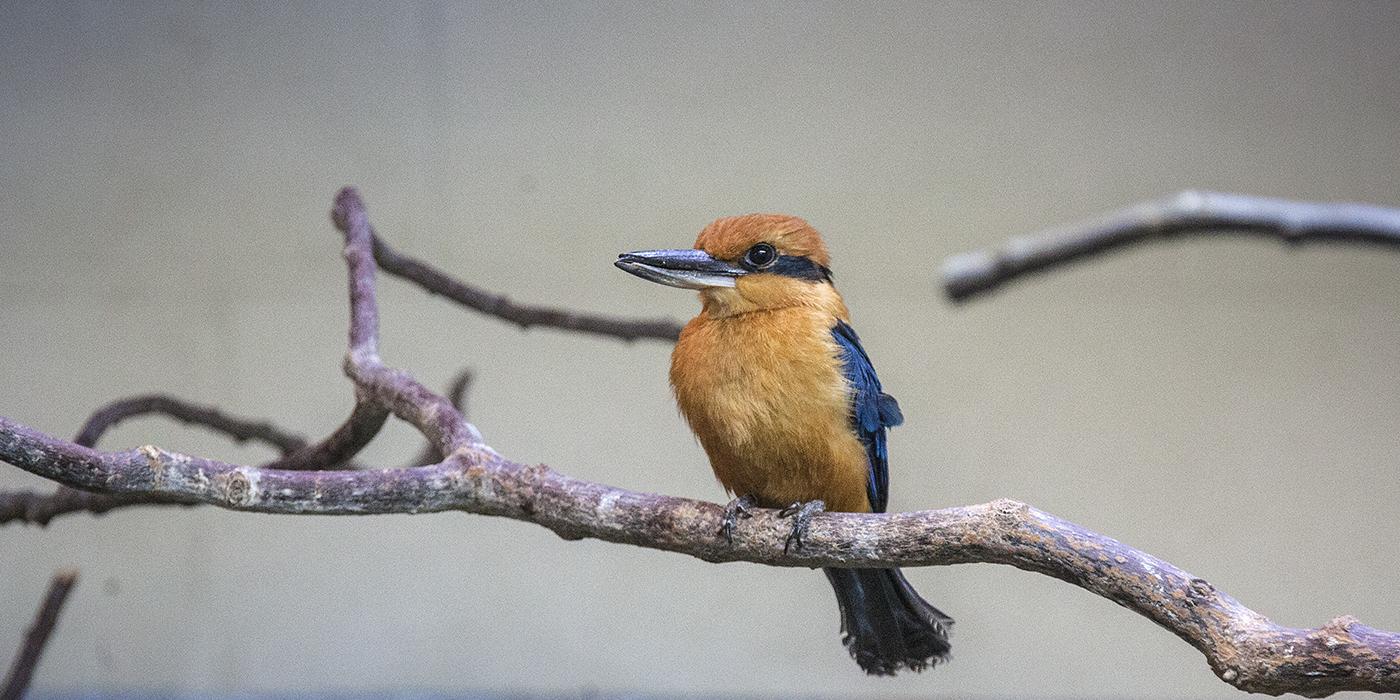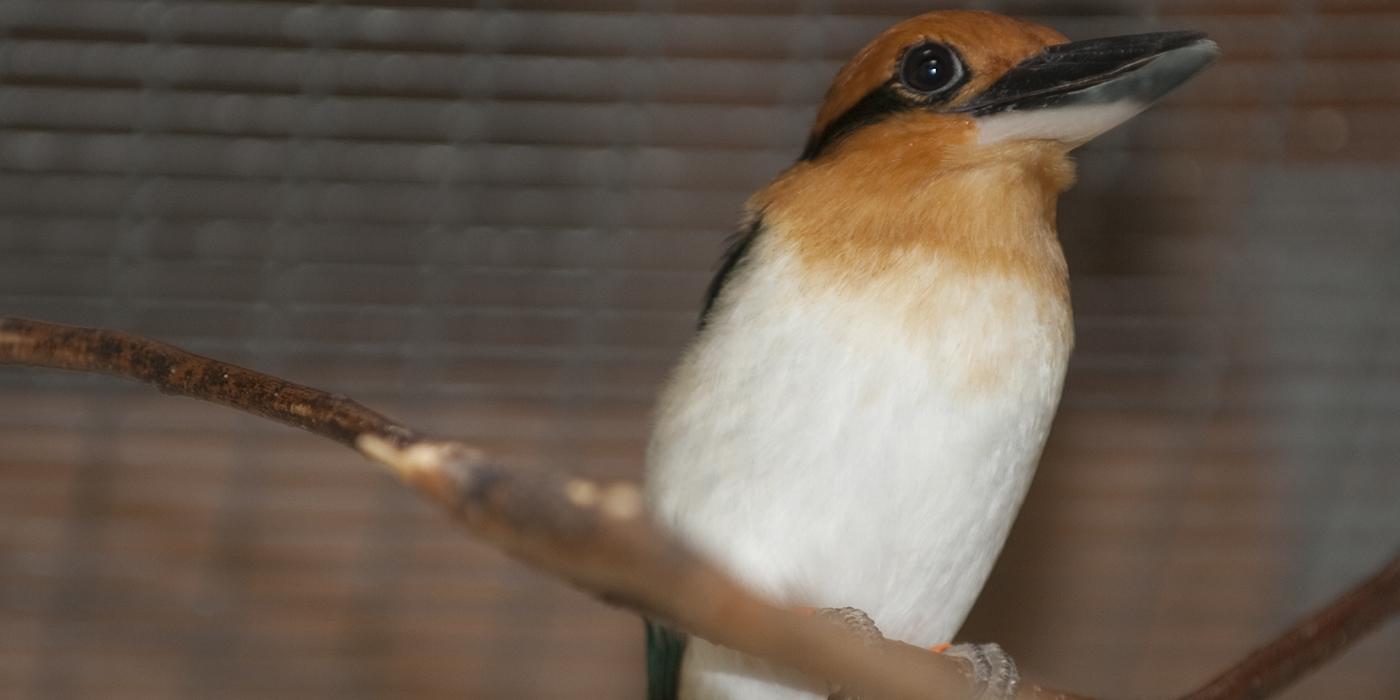Physical Description
Guam kingfishers are medium-sized birds with large heads and strong beaks. They have blue tails, and their wings are a metallic green-blue. The males have a cinnamon-brown body. Females appear similar to males but have pale white breast feathers and are slightly larger than males. Juveniles are dusty in color before their orange plumage brightens.
Size
These birds measure around 22 centimeters (9 inches) in length and weigh 50 to 70 grams (1.7 to 2.4 ounces).
Native Habitat
This species was found only on the island of Guam but is extinct there today. Historically, the Guam kingfisher occurred island-wide in all habitats, except pure savannah and wetlands, favoring woodlands and limestone forest areas for feeding and nesting. Two other similar species, Todiramphus reichenbachii and Todiramphus pelewensis are found on Pohnpei and Palau, respectively. Guam kingfishers were declared extinct in the wild in 1986, and lived in diverse habitats, including limestone forests, coastal lowlands, coconut plantations and even large woody gardens.
Lifespan
Guam kingfisher lifespan in the wild has not been documented. In human care, the lifespan is between 15 and 20 years.
Communication
The kingfisher has a loud, raspy, distinct call that generally consists of three to five harsh, loud notes, followed by several similar but much softer notes.
Food/Eating Habits
Unlike many kingfishers, this species does not rely on fish for its diet. Instead, it feeds primarily on grasshoppers, skinks (small lizards), insects and small crustaceans, which it captures on the ground. In human care, the Guam kingfisher takes its prey on the ground in the form of mealworms, crickets and anoles.
Social Structure
Kingfishers do not live in large groups. They are most often observed by themselves or in pairs. A male will defend a territory. Once paired with a female, the two birds defend their territory against other kingfishers.
Reproduction and Development
Guam kingfishers nest in tree cavities, and both sexes participate in nest selection. This seems to play an important role in their pair bonding. The male and female dig out a hole in a decaying tree 3 to 8 meters above the ground. They may excavate several holes, but they only use one to lay a clutch of two smooth white eggs. The breeding season is concentrated between Dec. and July, with both parents caring for the nest and chicks. The incubation period is 21 to 23 days. Chicks are fed by regurgitation in early stages with small food items offered thereafter. Fledging is estimated to occur at 33 days. The birds have difficulty breeding in human care, as males and females are often incompatible or incapable of raising chicks.
Conservation Efforts
The Guam kingfisher is among the most endangered species in the world, as the bird is extinct in the wild and only exists as a managed population in zoos and breeding facilities. There are less than 145 birds in human care at 24 Association of Zoos and Aquariums facilities and one breeding facility on Guam.
Although listed by the Guam Endangered Species Act in 1982 and added to the U.S. Endangered Species List in 1984, the Guam kingfisher is now extinct on Guam. Many of Guam’s native birds have been severely reduced or even driven to extinction by the brown tree snake. Guam’s birds, which did not evolve on the island with the brown tree snake, are prime targets for this arboreal predator. As a result, the Guam kingfisher population plunged from an estimated 3,000 in the early 1980’s to approximately 30 specimens in 1986.
While a managed population exists under a Species Survival Plan (SSP) in zoos and on Guam, no wild population has been reestablished.
A cooperative rescue effort between the Guam Department of Aquatic and Wildlife Resources and several AZA intuitions led to the capture of 29 kingfishers between 1984 and 1986 and grew to 65 birds by 1991 but dropped to only 59 birds in 10 U.S. institutions in late 1999. The Guam kingfisher has proven to be difficult to breed in human care. When the program began, there was very little information on the nutrition and behavioral ecology of wild birds. They seemed to need very specific nest log requirements, and when successful nesting did occur, some newly hatched chicks disappeared from the nest.
Most zoos were feeding newborn mice to their kingfishers, and scientists feared that some parents were confusing their blind and naked hatchlings with food. Guam kingfishers are now fed a more natural looking diet of small lizards, called anoles, in addition to insects. Researchers are hopeful that the population will begin to increase once again as our understanding of their behavior grows.
As of March 2020, there are 139 birds in managed care, held in the 24 U.S. institutions and at the Division of Aquatic and Wildlife Resources breeding facility on the island of Guam. The long-term goal of the captive breeding program is to eventually breed enough Guam kingfishers to be able to re-introduce them to a nearby snake-free island. As the population in human care increases, the U.S. Fish and Wildlife Service and Guam’s Department of Aquatic and Wildlife Resources continue to look for suitable release sites in Guam.
The availability of release sites continues to shrink, however, due to deforestation and human expansion. Controlling the brown snake population remains a significant challenge as well. Scientists are hopeful that initiatives for snake control and forest protection signify that the reintroduction of the Guam Kingfisher may soon become feasible. Additionally, field studies of a different species of wild kingfisher are underway on Pohnpei, another Micronesian island, to secure essential biological information on wild populations and to test various reintroduction techniques for use on Guam.
Guam Kingfishers at the Smithsonian Conservation Biology Institute
Current research is looking at stress factors related to reproduction. A protocol has been developed to monitor stress levels as evidenced by corticosterone in kingfisher feathers. Feathers from wild relatives of the Guam kingfisher, including collared kingfishers, were collected to serve as markers for stress in wild birds. Scientists are now working to evaluate the effect of facility conditions on feather corticosterone concentrations.
Early results suggest that variation in sound levels may be associated with corticosterone. Preliminary results suggest linkage between reproduction and stress, including indications that birds that did not lay eggs had higher corticosterone than birds that did lay eggs. This research will help lay the foundation for recommendations on management techniques that will minimize stress and maximize Guam kingfisher breeding success in human care. This will accelerate population growth, bolster genetic viability and lead to standardization of husbandry techniques.
Help this Species
Support organizations like the Smithsonian’s National Zoo and Conservation Biology Institute that research better ways to protect and care for this animal and other endangered species. Consider donating your time, money or goods.
Share the story of this animal with others. Simply raising awareness about this species can contribute to its overall protection.
Are you a student? Did you love what you learned about this animal? Make it the topic of your next school project, or start a conservation club at your school. You'll learn even more and share the importance of saving species with classmates and teachers, too.
Smithsonian's National Zoo and Conservation Biology Institute. (n.d.). Guam kingfisher (sihek). Retrieved January 9, 2026, from https://nationalzoo.si.edu/animals/guam-kingfisher-sihek
Animal News






